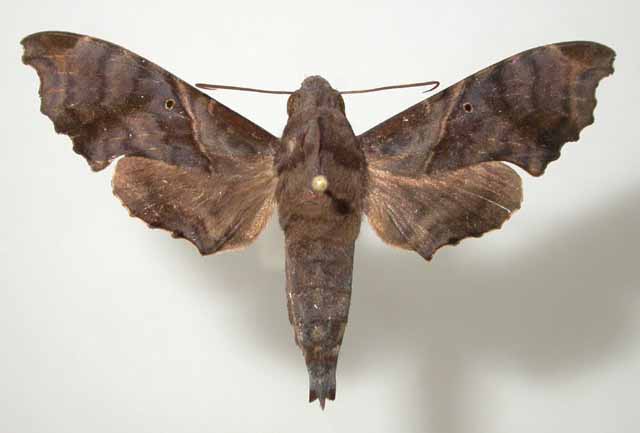Enyo latipennis
ih-NYE-oh
mm
lagh-tih-PEN-nihs
(Rothschild & Jordan, 1903) Epistor

Enyo latipennis courtesy of
Jean Haxaire.
This site has been created by
Bill Oehlke at oehlkew@islandtelecom.com
Comments, suggestions and/or additional information are welcomed by Bill.
TAXONOMY:
Family: Sphingidae, Latreille, 1802
Subfamily: Macroglossinae, Harris, 1839
Tribe: Dilophonotini, Burmeister, 1878
Genus: Enyo Hubner, [1819] ...........
Species: lugubris latipennis (Rothschild & Jordan, 1903)
|
MIDI MUSIC
.....It's a Wonderful World.....
copyright C. Odenkirk
ON.OFF
<bgsound src="world.mid" LOOP=FOREVER>
|
DISTRIBUTION:
Enyo latipennis (Wing span:
mm) flies in Jamaica, the specimen type locality. It was formerly
classified as a subspecies of Enyo lugubris.
The pronunciation of scientific names is
troublesome for many. The "suggestion" at the top of the page is
merely a suggestion. It is based on commonly
accepted English pronunciation of Greek names and/or some
fairly well accepted "rules" for latinized scientific names.
The suggested pronunciations, on this page and on other pages,
are primarily put forward to assist those who hear with internal
ears as they read.
There are many collectors from different countries whose
intonations and accents would be different.
Enyo is chosen as the genus name either for 1) the Greek goddess of
war and waster of cities, who is sometimes depicted as
the daughter of Ares, but also as his mother or his sister, or for 2)
one of the Graeae, the three 'old women' identified with Bellona in
Rome.
In Greek mythology she appears covered in blood, and striking
attitudes of violence.
In Latin "lati" means wide and "pennis" means feathers. The anal
tufts or "feathers" MAY ? be wide in fresh specimens.
FLIGHT TIMES:
Enyo latipennis probably has two to
three broods annually.
ECLOSION:
Adults eclose from pupae formed in subterranean
chambers.
SCENTING AND MATING:
Females call in the males with a pheromone released from a gland at the tip of the
abdomen. Both males and females nectar at flowers.
EGGS, LARVAE, PUPAE:
Return to Sphingidae Index
Return to Dilophonotini Tribe
Goto Central American Index
Goto South American Index
